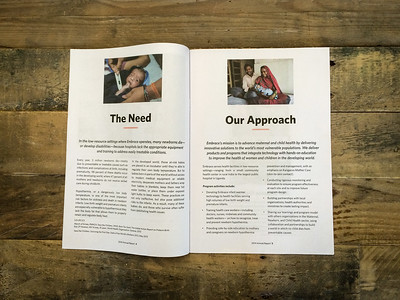Thanking donors is crucial for securing gifts—especially for small nonprofits trying to build a support base. Show your gratitude with these creative ideas.
By Logan Foote
Building relationships is crucial for nonprofits to grow their impact. For small nonprofits in particular, these relationships are critical to growing and scaling your work to drive additional impact. A big part of such relationships is thanking donors and partners for their continued support and generosity. Truly, every donor deserves a heartfelt thank-you message for their contributions and gifts, but you can take it to the next level and make a lasting impression with an appreciation event or customized outreach.
Fun, memorable donor appreciation events and initiatives function to build a sustainable support network for your small nonprofit. Consider these appreciation ideas to thank your donors in a new and memorable way.
- Exclusive Events & Activities
An event designed exclusively for donors shows how much you value their support and your relationship with them. These can be tacked on to an existing event, such as your charity golf tournament, annual conference, or gala. The point is to limit it to “donors only” to reward them for their generosity.
For instance, let’s say you’re organizing a charity golf tournament to raise money for your work. You might invite donors to an exclusive reception the day or evening before the tournament, complete with refreshments, tee times, access to the driving range, and branded merchandise as a thank you for their donations. Another idea is to have a specific flight (a series of smaller competitions within a golf tournament) or round of the tournament that’s just for donors, with special prizes for the flight’s winners.
- Behind the Scenes Tours
Your donors care about your mission’s progress and are investing in your daily operations by donating. Give them a new perspective on the work they’re supporting with a behind-the-scenes tour. Continuing with the golf tournament example, you might invite donors to visit while you’re prepping player gift bags or auction items. Or perhaps ask them to participate in a tour of your facility to see how your programs operate and even interact with some beneficiaries (with their permission).
- Storytelling Events
Storytelling is the linchpin of your nonprofit’s case for support, so holding an event centered around that is a way to share your mission’s impact in a social setting. Invite donors to an event with a meal or refreshments and a series of stories shared by your nonprofit’s beneficiaries. Donors will have the chance to network with other donors and make connections with beneficiaries. Consider premiering any new videos or unveiling new initiatives at such an event, not only to give donors a sneak peek, but to help them want to have a stake in your organization’s future.
Another idea is to tie storytelling into your nonprofit’s charity auction. After you’ve completed reporting from the auction and determined who made the largest contributions by purchasing the big ticket items, invite them to a storytelling event. Share in-depth insights into the impact of the money raised and how it plays into your overall mission. Donors will love the chance to meet and get to know other supporters while learning more about your organization’s future.
- Donor Appreciation Wall
A donor appreciation wall immortalizes your nonprofit’s most impactful donors. It’s a meaningful way to add these donors to your organization’s collective history. Place such a wall in a high visibility location, such as the entrance to your office or other facility. You can add your nonprofit’s own twist to this classic appreciation idea by determining how you’ll segment out donors on the wall and how each should be recognized. Consider these ideas:
- Giving Tiers. Tailor these to your nonprofit to recognize major contributors to your fundraising efforts. According to Double the Donation, a common tier structure used by many organizations is bronze, silver, gold, and platinum donors and sponsors.
- Legacy Leaders. This idea works well for younger nonprofits that are in growth mode and relied on these gifts to get their work off the ground. More established nonprofits can retroactively add donors who have significantly contributed to your growth over time.
- Community Champions. You might recognize donors who also volunteer their time and advocate for your nonprofit to their networks to this group.
Other categories could include donors who contributed to fundraising events, funded a specific project or program, or contributed to a capital campaign. As your nonprofit grows, add more tiers to your appreciation walls. Be sure to plan your design with future growth and recognition in mind. You might even ask donors for their feedback on the new groupings before you finalize your thank you plan.
- Customized Videos
Video is an incredibly powerful tool that nonprofits should leverage whenever possible. Creating customized videos expressing your gratitude to donors is yet another way to build and strengthen relationships with your organization. These types of thank you videos don’t have to be complicated or expensive—in fact, anyone with a laptop or smartphone can make one!
Work with your organization’s president, executive director, or even a beneficiary to assist you in creating the content. Ask them to create video snippets that address each donor by name and reference the specific fund, campaign, or event they’ve contributed to. For instance, if a donor who attended your charity golf tournament excelled at one of your on-course games, won the tournament, or got a hole-in-one, be sure to mention their involvement and thank them for their participation.
In terms of logistics, batching out this personalized content will streamline the production process and the customized portion can be added to video clips that provide additional context about your work.
Wrapping Up
Thanking donors is crucial to retaining them over time. It does add another step to the process and potentially some expense, but it should be factored into your budgets and fundraising plans whenever possible. You might think that cutting down on thank you efforts is an option to improve fundraising efficiency, but it would be at the expense of donor stewardship and relationship development. The donor appreciation ideas outlined in this post can help your nonprofit strengthen your donor relationships to keep their support well into the future.
Logan Foote, Sales and Education Manager at GolfStatus, has been around the game of golf nearly his entire life. He first picked up a club at the age of four, and despite thousands of attempts, he’s never had a hole-in-one. He earned a bachelor’s degree in business administration at the University of Nebraska-Lincoln and pursued a career in sales. Logan came to GolfStatus in 2017, where he channels his passion for golf to help nonprofits raise money through the game. As Sales and Education Manager, Logan oversees a team that works with thousands of nonprofit clients to maximize their golf fundraisers with the GolfStatus platform, and shares his golf fundraising expertise through GolfStatus’s free educational webinars. He lives and golfs in Lincoln, Nebraska with his wife and three sons.










